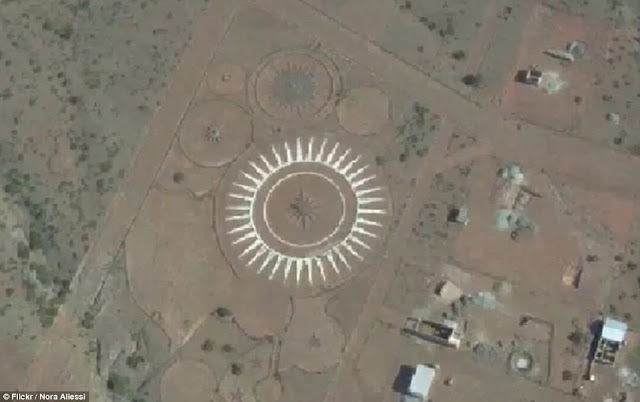The strange monument UFO landing pad built by a
man who claimed aliens told him to construct it. The UFO landing pad has been
built in the middle of the Argentinian desert with the collection of white and
brown rocks. The man gives the shape of a star, known as an 'ovniport'. It appeared in the small town of Cachi in the
province of Salta. The site is a huge attraction for UFO fanatics who hope to
contact aliens.
The Swiss man Werner Jaisli travelled to town of Cachi in
search of extraterrestrials. After that he have claimed to receive a 'telepathic
message' from aliens telling him they required a place to land on earth. They
landed about 100 meters above our heads and projected on us a beam of light
that made us both see their own brightness. The funny thing is that it did not
affect our vision. Something began to bubble through my brain: it was an order.
They asked me telepathically to build the airport.' Visitors flock to the site
and no wonder, because it's magnificent built.
He is thought to have instantly got to work, making a large
star in 2008 with 36 points that measures 48 meters in diameter. Jaisli also
made a smaller star and it took him till 2012 until his work was done. As a
tourist’s point of view, the UFO landing pad is also popular with
UFO enthusiasts. They believe they may be able to contact beings from another
world from the site.
However, soon after the “ovniport” was built, the local
people of Cachi stopped seeing Jaisli, who had a large beard and would often
wear a Druid outfit. It is imprecise where he travelled to but some people sparking
theories, that he may have been abducted by aliens. Although, it is thought he
actually traveled back to Bolivia - with another theory that he went to
Switzerland. Also Read: Mount Danxia
















































